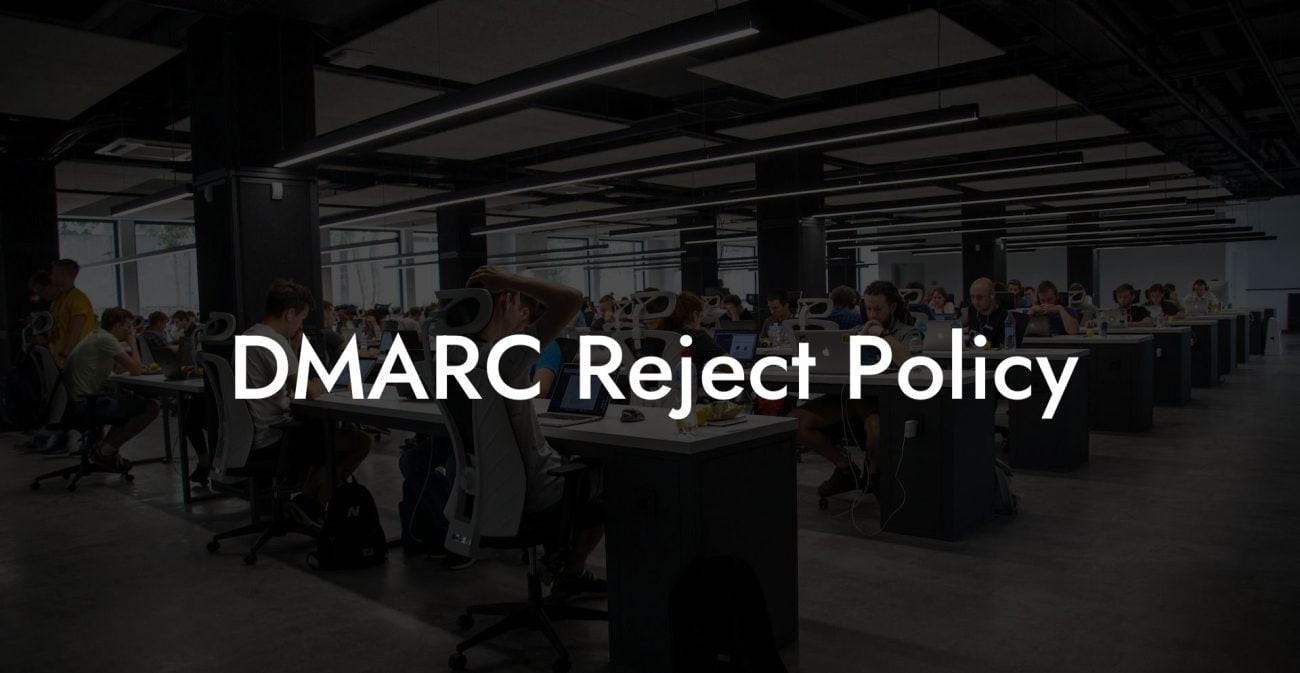In today's highly connected world, cyber threats have become more pervasive, causing great damage to businesses and individuals alike. One such technique that attackers use to infiltrate systems and access sensitive information is email spoofing. As a result, companies and email service providers have been looking for ways to protect their customers from such attacks. One of the most effective solutions is Mimecast Domain-based Message Authentication, Reporting, and Conformance (DMARC). In this blog post, we'll dive into what Mimecast DMARC is, how it works, and why organizations need to implement it for enhanced email security.
Mimecast DMARC Table of Contents
What is Mimecast DMARC?
Mimecast DMARC is an email security protocol that helps protect organizations from email spoofing, phishing, and other cyber-attacks. It builds on top of two existing email authentication technologies—Sender Policy Framework (SPF) and DomainKeys Identified Mail (DKIM)—to add better visibility and control over email sent using your organization's domain.
How does Mimecast DMARC work?
Protect Your Data Today With a Secure Password Manager. Our Top Password Managers:
Mimecast DMARC works by allowing domain owners to create and publish a DMARC policy, which essentially tells the receiving email servers how to handle emails that fail SPF and DKIM checks. The policy specifies if the messages should be quarantined, rejected, or delivered as-is along with reporting details on email authentication checks.
SPF and DKIM: Building Blocks of DMARC
- Sender Policy Framework (SPF): SPF is an email authentication technique that enables domain owners to specify which IP addresses are allowed to send emails on behalf of their domain. The receiving servers then verify the incoming emails against this IP whitelist.
- DomainKeys Identified Mail (DKIM): DKIM is another email authentication method that uses public-key cryptography to digitally sign emails, allowing receiving servers to verify that the email was legitimately sent from the claimed domain and hasn't been tampered with during transit.
Benefits of Implementing Mimecast DMARC
By implementing Mimecast DMARC, organizations can gain a plethora of benefits that not only improve email security but also have a positive impact on the organization's reputation and deliverability. Some of these benefits include:
- Protection from Email Spoofing: DMARC ensures that only legitimate emails sent from authorized sources reach your recipients, preventing cybercriminals from using your domain to send malicious emails.
- Improved Email Deliverability: Implementing DMARC can increase the likelihood of your emails reaching the inbox, as mailbox providers and ISPs trust domains with DMARC policies in place.
- Visibility and Control: DMARC provides detailed reports and insights on email authentication checks, enabling you to monitor your domain's email traffic and take action if needed.
- Enhanced Brand Reputation: By proactively protecting your domain from email spoofing, you not only protect your customers but also strengthen your brand's trustworthiness and credibility.
Mimecast DMARC Example:
Imagine you are an online store owner, and malicious actors have targeted your domain to send phishing emails to your customers. Without DMARC in place, customers receiving these phishing emails may believe they are legitimate coming from your domain and fall victim to the phishing attack, resulting in a loss of their sensitive information.
However, by implementing Mimecast DMARC, the fraudulent emails would be identified and handled according to your specified policy, preventing them from reaching your customers' inboxes. This not only protects your customers but also maintains your brand's credibility and trustworthiness.
In conclusion, Mimecast DMARC is a vital email security measure that provides organizations with robust protection against email spoofing and other cyber threats. By implementing Mimecast DMARC, businesses can ensure that their emails are legitimate, enhance their brand reputation, and improve email deliverability. So, if you want to take your organization's email security to the next level, it's time to consider Mimecast DMARC implementation. Don't forget to share this post with your network to spread awareness about the importance of Mimecast DMARC, and stay tuned for more comprehensive guides on voice phishing and cybersecurity.
Protect Your Data Today With a Secure Password Manager. Our Top Password Managers:















